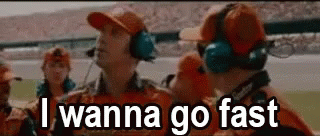
Posts: 780
-
Karma: 6,776
Hey man! I used to be a ski instructor and I have some thoughts:
First of all, the fastest way to get better is to ski with friends who are better than you. Additionally, a ski lesson can do a lot at your level. Of course, this is pretty general info, and there is no way I can give you accurate advice for your specific case, so I'll shotgun some common stuff I would always teach people. It probably won't all apply to you but hey maybe you'll see something that clicks:
Beginner:
Stance: are you centered? On groomers with a traditional mount ski, some forward lean can be useful too for more edge grip and ease of engaging turns. There's many analogies for how to think about leaning forward, but IMO the really important takeaway is less about leaning forward, and more about NOT leaning back when you get scared. As a general rule you only need to lean back enough to prevent your tips diving in powder or below obstacles, no more. So on groomers, basically never. The common ways an instructor may remind you to keep forward are: think about squishing a bug under your big toe, thinking about the boot-shin pressure, or staying in a stance similar to throwing a free throw in basketball. My personal method is to think about tippy-toeing in the boots, and this keeps me centered. PS a "centered" stance will feel forward on steep slopes. You will know you are centered if you can jump without falling forward or backwards.
Balance: Once your stance is dialed, make sure you're "loose" and your balance is good. Best way to improve this is to ski on varied, unpredictable terrain. My favorite drill is mini park jumps and easy boxes. If you can cruise those without being knocked off balance, that's great. At this level, don't worry about rails, going sideways on boxes, or big park jumps. Remember park etiquette, call your drop, stay on what you can ski, the lips to rails aren't jumps. Another good one is easy woods. Don't look at the trees.
Turns: are you full parallel or do you still wedge a little between turns? This is a common sticking point and frankly somewhat difficult to overcome. People will commonly have the inside back edge of the inside ski catch in a turn. In my experience, a focus on edging and stance can help a ton. My usual drill is to find a semi-steep slope and do some side-slipping drills. Keeping your skis totally sideways, try speeding up and slowing down by tilting your edges more or less. Try to focus on keeping the angles consistent between the skis and not catching the inside edge of the uphill ski. Once you can do this in total control, transition from left side to right side side-slipping without a wedge in the middle. A steeper slope actually helps for this. You will pick up a little speed between side-slipping, but stay calm and trust. If you're catching the inside ski edge still, think about the angle control you just worked on to make sure the ski is tilted over before you're facing the other way.
Intermediate:
Upper-lower body separation: Do your shoulders turn with your skis? They shouldn't. Your lower body should turn with your skis, and your upper body should stay facing straight down where the trail is headed. A good drill is to hold your poles together horizontally with your arms fully extended in front of you. Now ski the down the trail keeping the poles (and thus your shoulders) facing straight down the trail, as your hips and lower body pivot with the skis. You will be able to feel your body twisting. Another good drill is to do the same side-slipping drill described in the "turns" section but keeping your shoulders square down hill. This will be very exaggerated as your skis will be at a 90 degree angle with your shoulders.
Carving: The faster, smoother way to turn! Instead of skidding a turn, carving uses the ski edges like a railroad track. The best way to learn is by doing a drill called "railroad tracks". Go somewhere flat, where you're comfortable straight-lining. A flat run-out is perfect. Slowly tip the skis over, and feel as they gradually turn. DON'T let them rotate and skid. A lot of people only carve their outside ski; try to get both. Leaning forward is crucial to carving hard, it engages the forward part of the edge and helps flex the ski. To get forward, be mindful of advice in the "stance" section and shift your hips forward of your boots. Keeping your hands in front can help too. You'll know your forward if you can't jump bc you'd land on your face. You'll know if you did the drill right if your ski tracks are clean trenches with no skidding. The more tipped over your edges are, the more forward you are, and the more you flex the ski, the harder you'll carve and the tighter the turn.
Edging: Make sure you're really getting the most out of your turn. To dig in more, make sure you lean by pushing your hip to the ground, NOT your shoulder. Think about keeping your upper body as vertical as possible and trying to drag your hip on the snow. This will get you skis more angle, and they will turn harder. The common drill you may have seen your local race team do is to ski without poles and put your outside hand on your hip and your inside hand on your head. This typically helps at a more advanced level and particularly with carving. It looks silly but it works. Same with carving, leaning forward can help the ski dig in more too.
Advanced:
Dynamic Balance: As you've probably learned by now, there times to lean forward, times to be centered, and time to be a little back. As you get better, dynamic balance is key. Leaning far forward to initiate a turn helps it come around quicker, being centered is key for staying on balance as you bounce around uneven terrain. A good way to improve dynamic balance is moguls. Lean forward in the transition between moguls, and then back (a tiny bit) right before impact of the next mogul to prepare. Let the impact send you a tiny bit forward for the next transition and repeat. To ski moguls fast requires throwing your balance all over the place in anticipation of each mogul impact.
One-ski Drill: Do you turn with both skis? Bet. Start on a bunny slope with only one ski on your dominant foot, poles help a ton. You'll quickly find turning one way is very difficult. Leaning forward and being patient is key to transitioning between turns. Once you get good, swap feet. Now when you get back on two skis you should be able to turn with both skis.
Air awareness: As you get better at jumps and even start learning tricks, air awareness becomes important. The easiest way to improve it is practice and a trampoline. The more time you spend in the air, the more comfortable you'll be. Good air awareness is key to learning flips and spins. It also helps jumping cliffs, too.
Jibs: Rails and boxes can help balance a ton! Best to learn boxes first, then once you can slide a box sideways, move on to rails. This can be a painful learning experience. I won't bog down the details of this bc theres a lot, but remember, you can't edge a rail, so wide stance, stay perpendicular to the rail, and put your weight on the forward ski.
Strength: Once you get pretty good at skiing, fitness can hold you back a lot. Again, you could write a book about this, but to keep it simple, a good mix of cardio, strength, and eccentric-based workouts can do wonders, especially preseason. Running, biking, hiking and swimming can help cardio. For strength, deadlifts, squats, and core workouts can be beneficial. For eccentric-based strength (absorbing energy vs exerting energy), I couldn't recommend enough a workout called the "leg blaster". Man they make your sore though. There is also a lot of weird specific knee muscles that are honestly super hard to workout, and sometimes just skiing a lot is best to get strong for skiing.
Hope some of this helps! I went a little ham here but I guess part of me just misses ski instructing a little. If you have any questions I'll try to answer the best I can. Cheers man



















